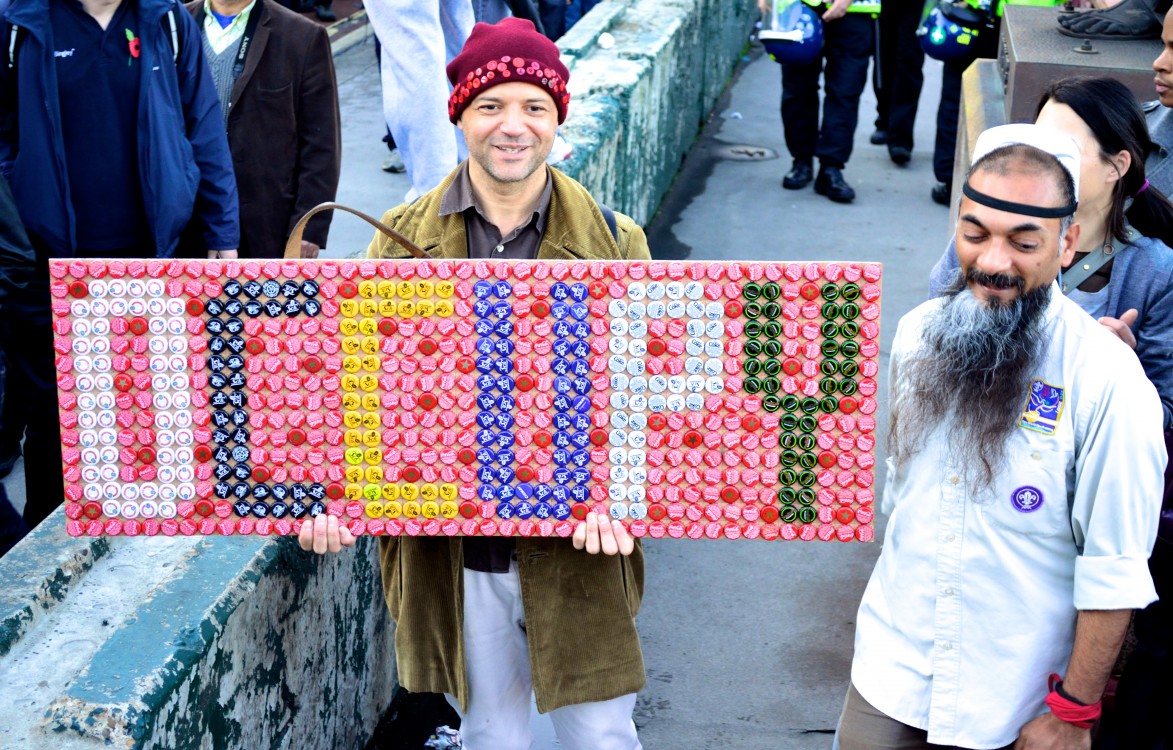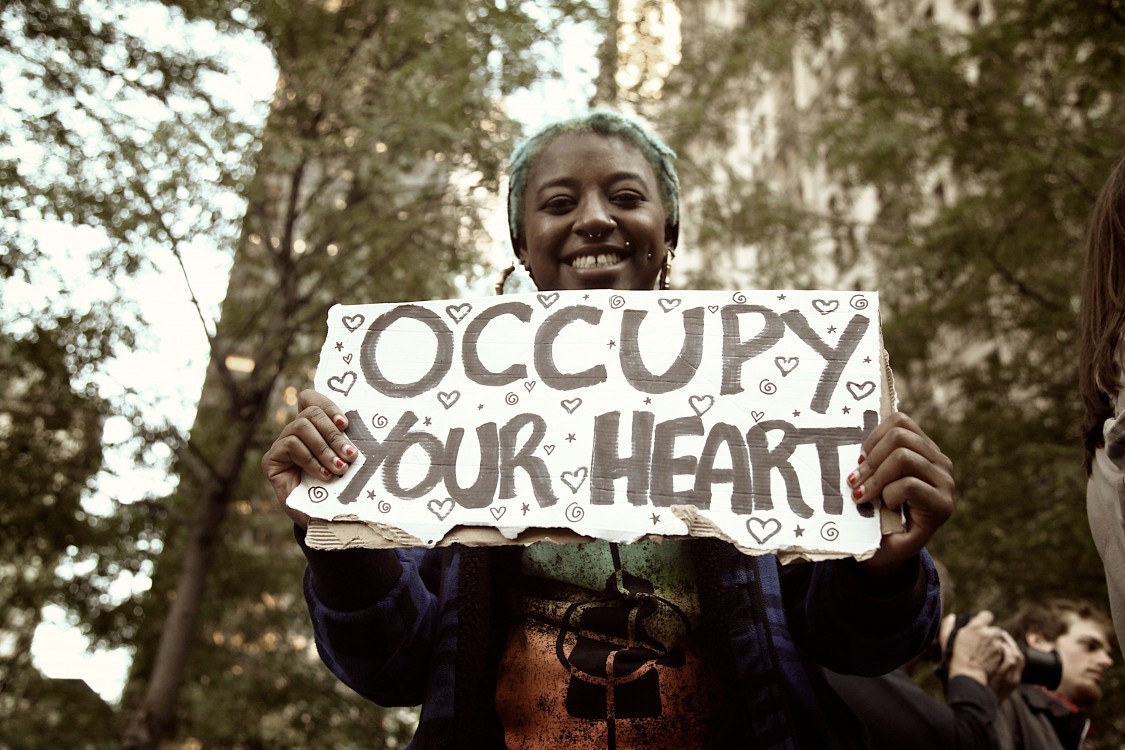On September 17th, 2011, activists gathered in downtown Manhattan with the stated goal of occupying Wall Street. They ended up in Zuccotti Park, where they built an encampment and remained until the NYPD surprised them with a violent eviction on November 15th. By then, the movement had developed a web of working groups and spread to cities around the country. Its "99 percent vs. 1 percent" critique of inequality articulated what many were experiencing in the wake of the 2008 financial crisis, but critics were skeptical of a demand-less movement and predicted its demise as police departments systematically destroyed encampments across America.
Since the disappearance of the occupations, though, a diverse group of new campaigns have aimed to translate the skills and networks developed during the initial two-month run of Occupy Wall Street into tangible change. Three years after that first night at Zuccotti Park, many of these groups still remain. Here are five campaigns that OWS-inspired groups have continued to fight for since the movement's presumed conclusion:
Occupy Homes
Home foreclosures were one of the most visible aspects of the financial crash, bringing the reality of corporate greed into living rooms across the country. In October 2011, an Occupy Minneapolis protester facing foreclosure suggested expanding the occupation into her home to prevent eviction.
"That really transformed what OWS could do because it brought politicization into neighborhoods and not just into traditional protest spaces," says Cat Salonek, an Occupy Minneapolis participant who helped organize Occupy Homes Minnesota, which is part of a national network currently focused on organizing renters while also pursuing policy changes and targeting Fannie Mae and Freddie Mac.
Salonek credits OWS with creating the necessary conditions "If OWS were a dandelion that the state crushed, a lot of seeds scattered and are now taking root," she says. "We're one of the organizations with really deep, strong roots to be able to build more power for the 99 percent."
Student Debt Reform
Higher education has seen better days: Total national student debt topping $1 trillion. An average student debt load of $29,000 per graduate. Increasing costs. Decreasing public funding. OWS student debt organizing began with a working group that has since turned into Strike Debt, which is creating a collective to help debtors self-organize.
Countless efforts by student activists to halt tuition hikes and combat undemocratic administrations also demonstrate the vitality of the struggle for accessible education for all. A public letter sent to NYU's president from a student who recently dropped out because of insufficient financial aid illustrates how the desire for education has become synonymous with accepting a lifetime of debt. Its more than 43,000 views illustrate how many others share that reality.
Occupy Sandy
In October 2012, Hurricane Sandy caused massive damage to neighborhoods around New York City. By the morning after the storm, former Occupiers were coming together to provide mutual aid to impacted communities, quickly setting up kitchens and distributing goods and resources where they were most needed.
After the first month of providing immediate relief, Occupy Sandy began to develop long-term projects that are still evolving, including a worker-owned cooperative in the Rockaways and a participatory documentary project to tell the stories of those affected.
"We all have knowledge, skills, and resources," explains organizer Tammy Shapiro. "Mutual aid is about using our skills, knowledge, and resources to benefit ourselves and others, as opposed to the idea that there are givers and receivers."
Alternative Labor
New York City fast food workers staged the largest strike in their industry's history on November 29th, 2012. Paired with increasingly visible organizing by Walmart workers, this signaled a new stage in the alternative labor, or alt-labor, movement that organizes workers outside of traditional unions.
Fast food workers around the country, organizing through the Service Employees International Union's Fight for 15 campaign, have been protesting for a $15 minimum wage and the right to form a union since that historic strike. Their campaign inspired 15 Now, an effort to raise Seattle's minimum wage to $15 that drew heavily on OWS's rhetoric and now has 20 chapters nationwide.
Prison Reform
Cecily McMillan, a 25-year-old graduate student and organizer, was leaving Zuccotti Park on March 17th, 2012, when she was arrested and charged with assaulting a police officer. This spring, a jury declared her guilty, despite evidence showing that she had been sexually assaulted by the officer and thrown her elbow back in self-defense. She spent 58 days at New York City's Rikers Island jail and emerged in July with a list of demands crafted by herself and other female inmates.
She has since used her media attention to raise awareness of the structural problems facing poor communities that lead to mass incarceration. "People are denied jobs, denied resources, essentially left to their own devices to live and take care of their own," she argues. "And when they do, you put them in jail? That, to me, is a political prisoner."
3 WAYS TO SHOW YOUR SUPPORT
- Log in to post comments













